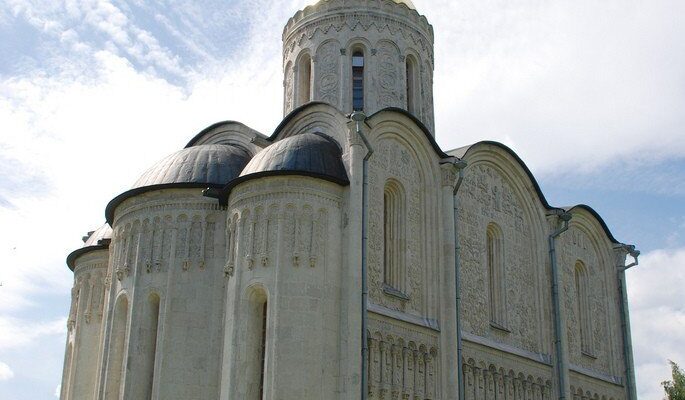Dmitrievsky Cathedral in Vladimir
Dmitrievsky Cathedral was built in the name of St. Dmitry of Solunsk by Prince Vsevolod Yurievich Bolshoye Gnezdo, in baptism Dmitry. The same name was given at baptism to one of Vsevolod’s sons, Vladimir, whose birth in 1194 is associated with the construction of the temple. Three years later the erection of the cathedral was completed by placing the icon of St. Dmitry.
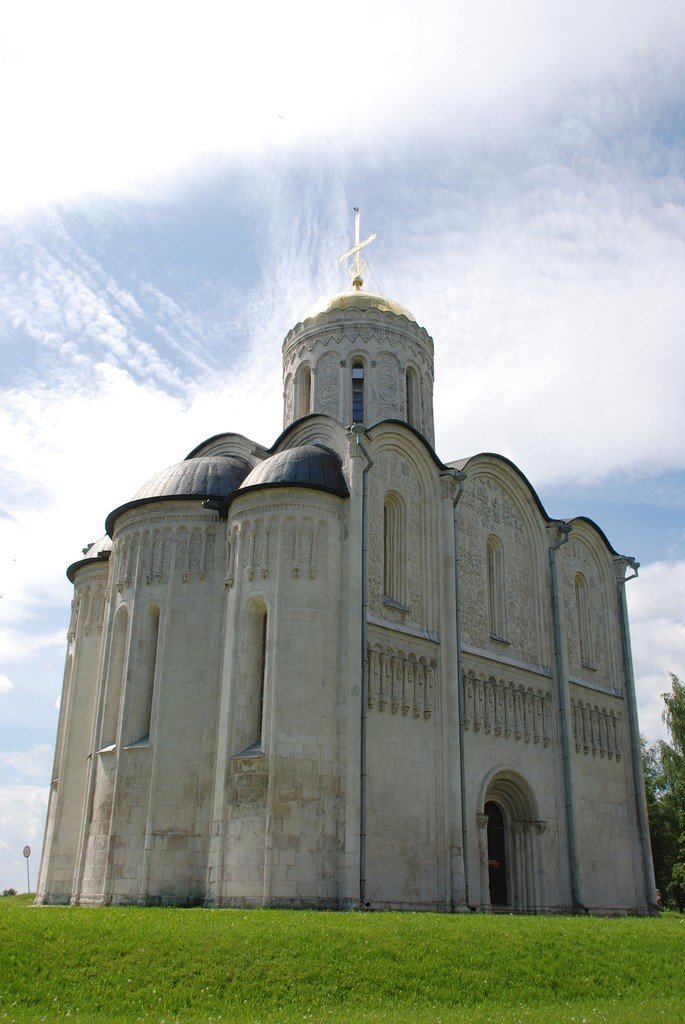
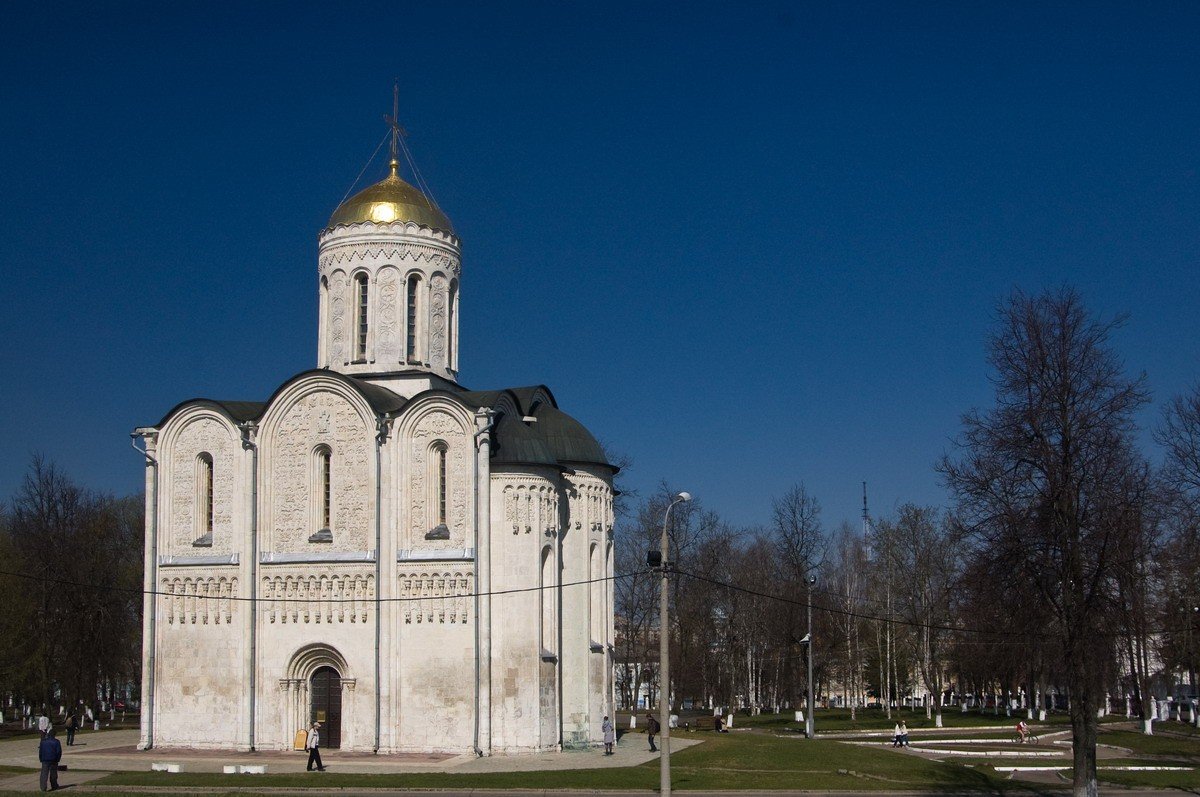
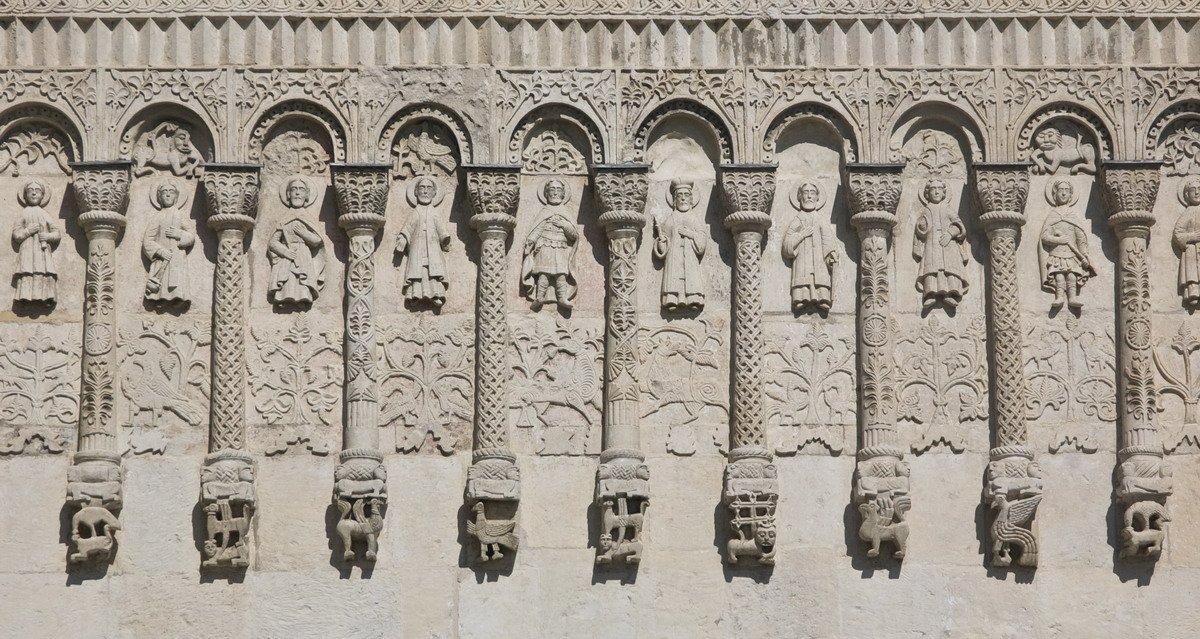
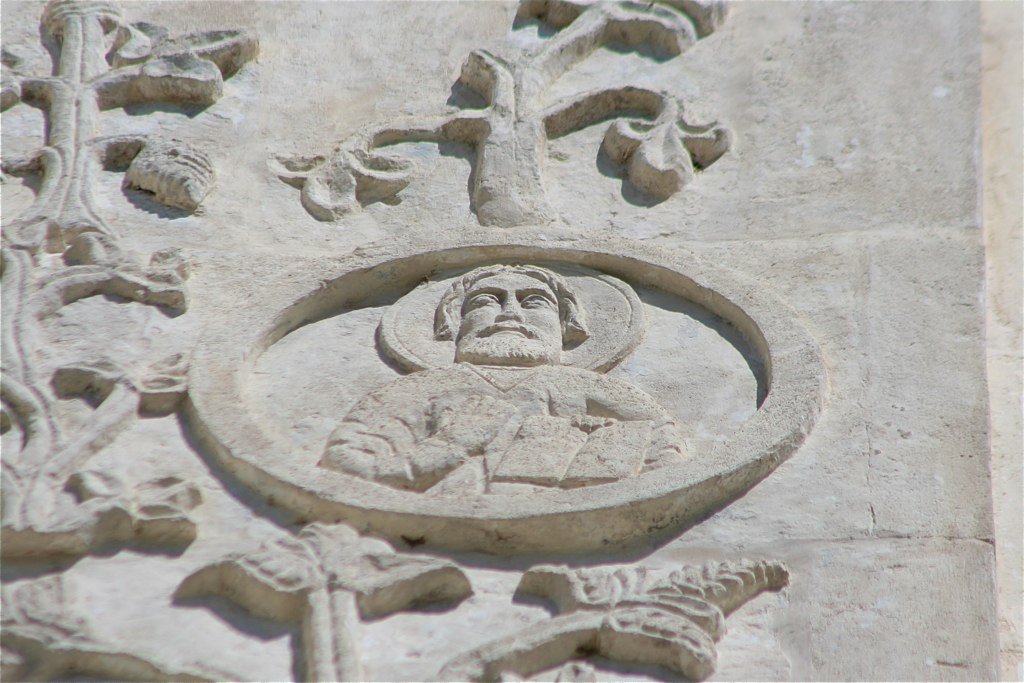
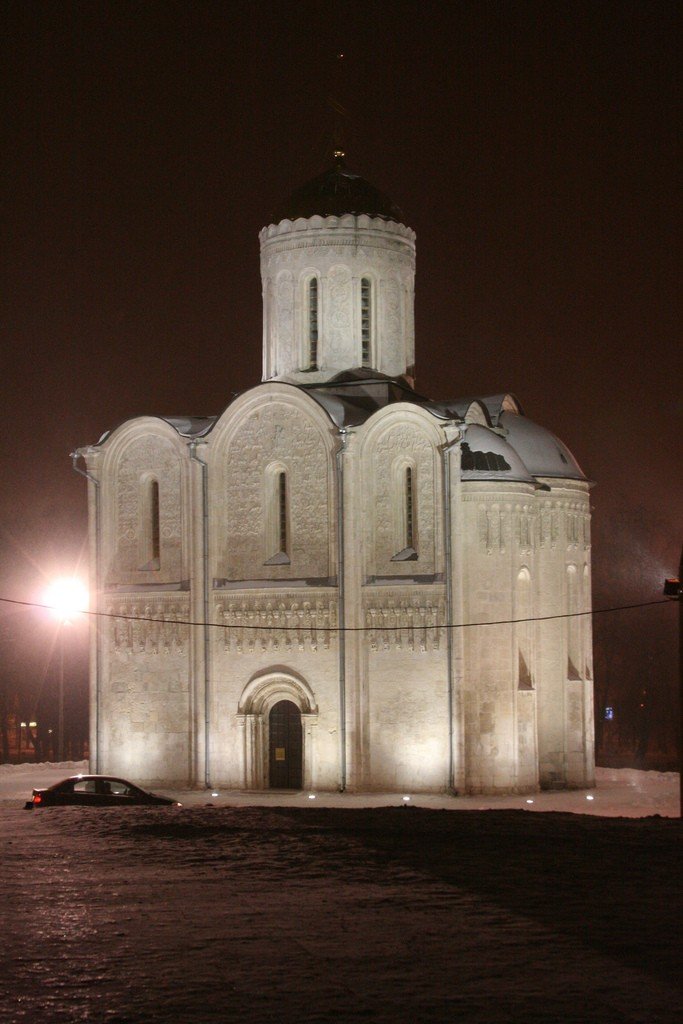
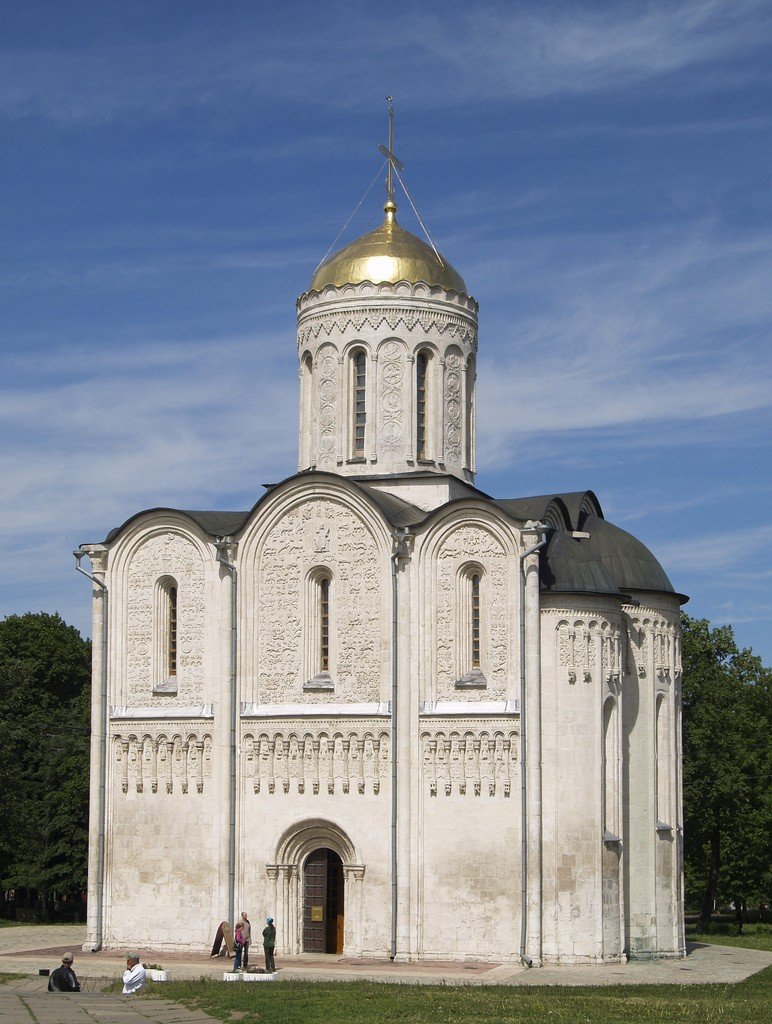
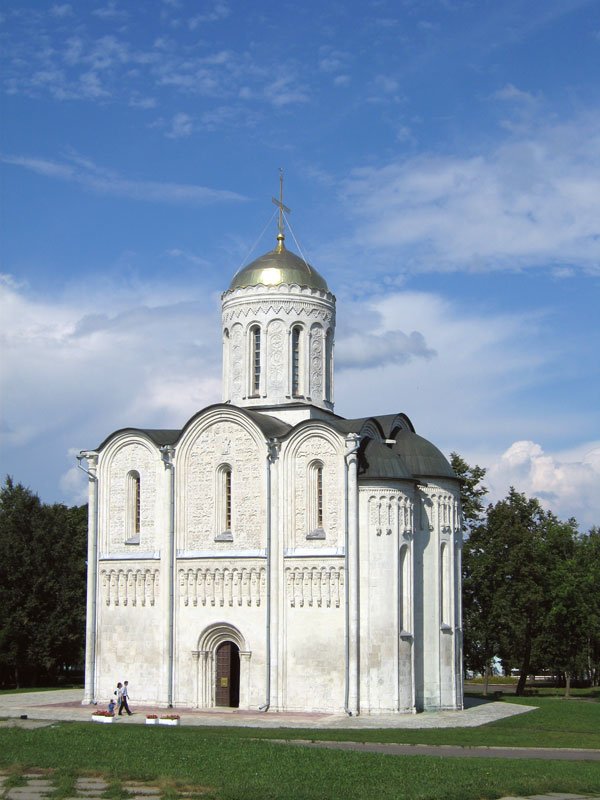
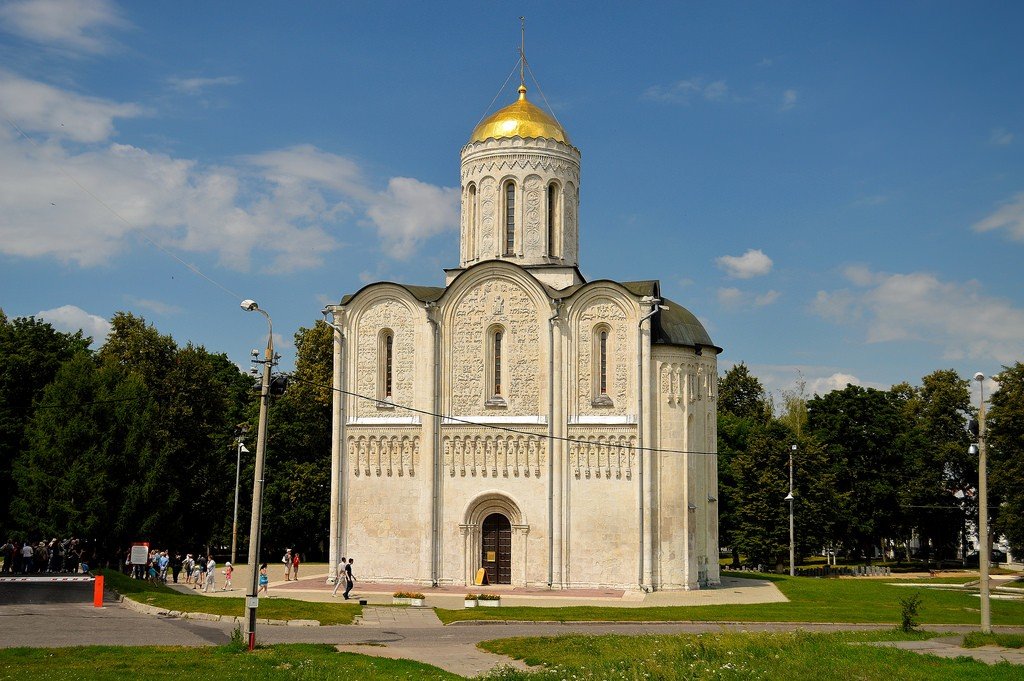
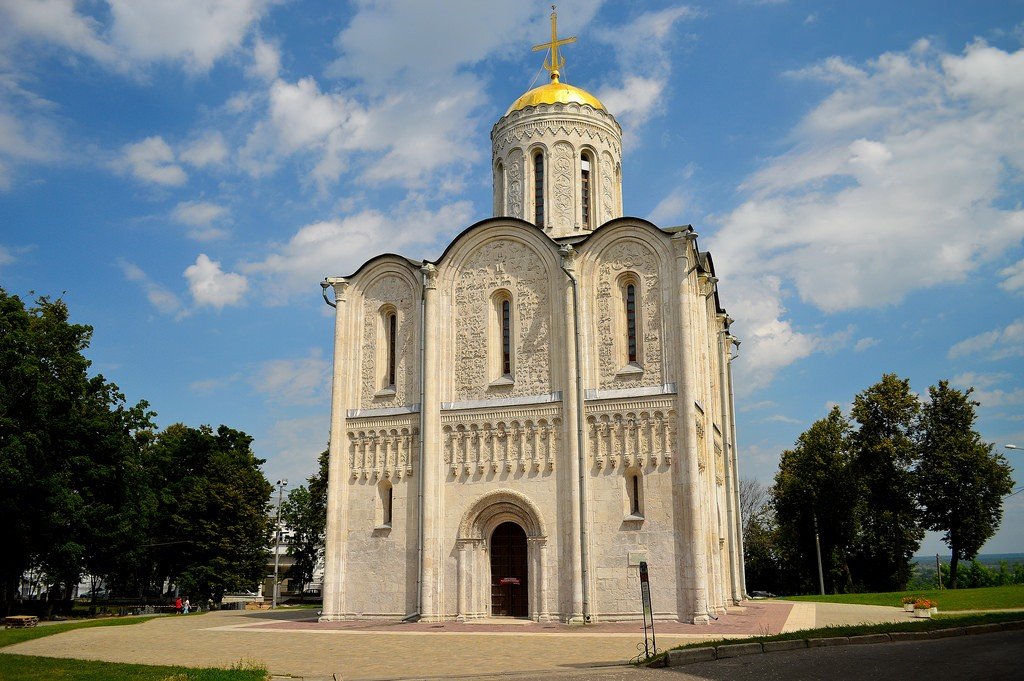
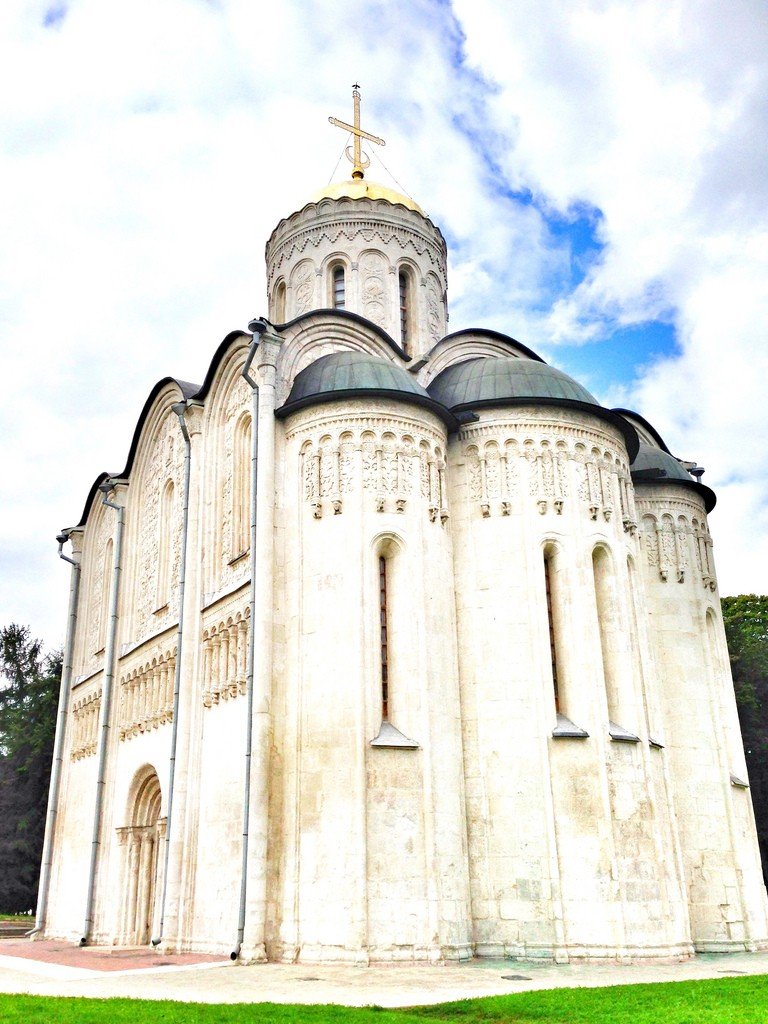
General information
Dmitrievsky Cathedral in Vladimir is a small one-domed, four-pillar church with a gilded helmet-shaped head and east-facing three-part altar. The smooth wall from the sole to the waist is explained by the fact that the lower tier was closed by a gallery and carved stair towers connecting the church with the princely palace. These buildings, taken as late, were dismantled in 1838.
.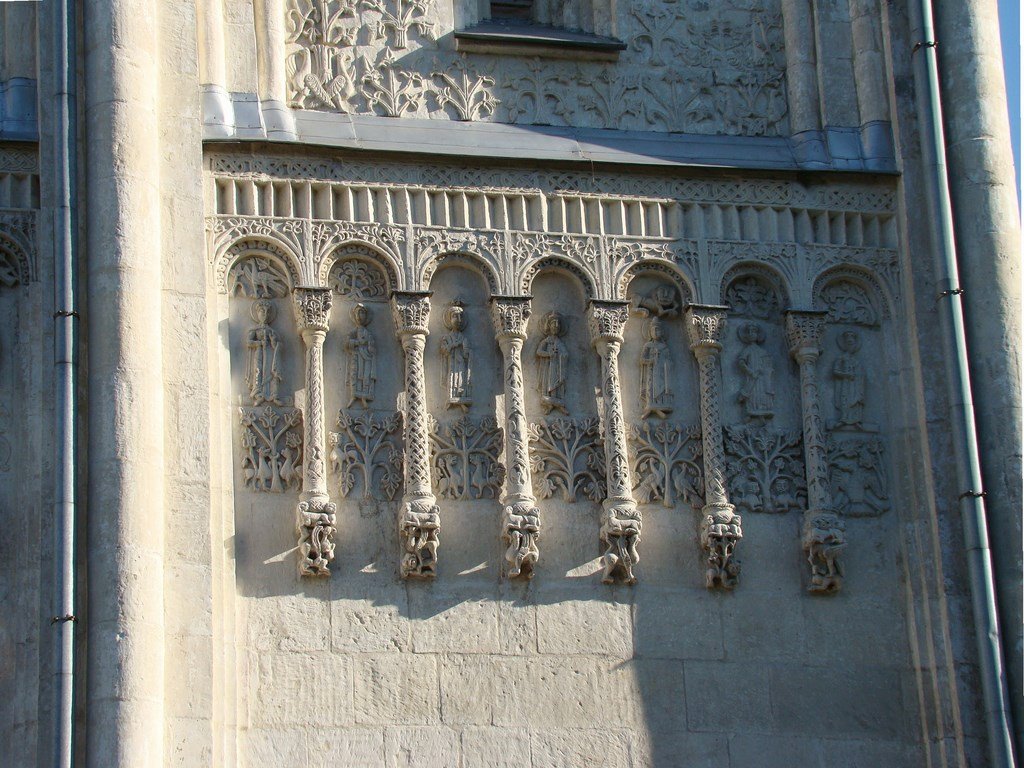
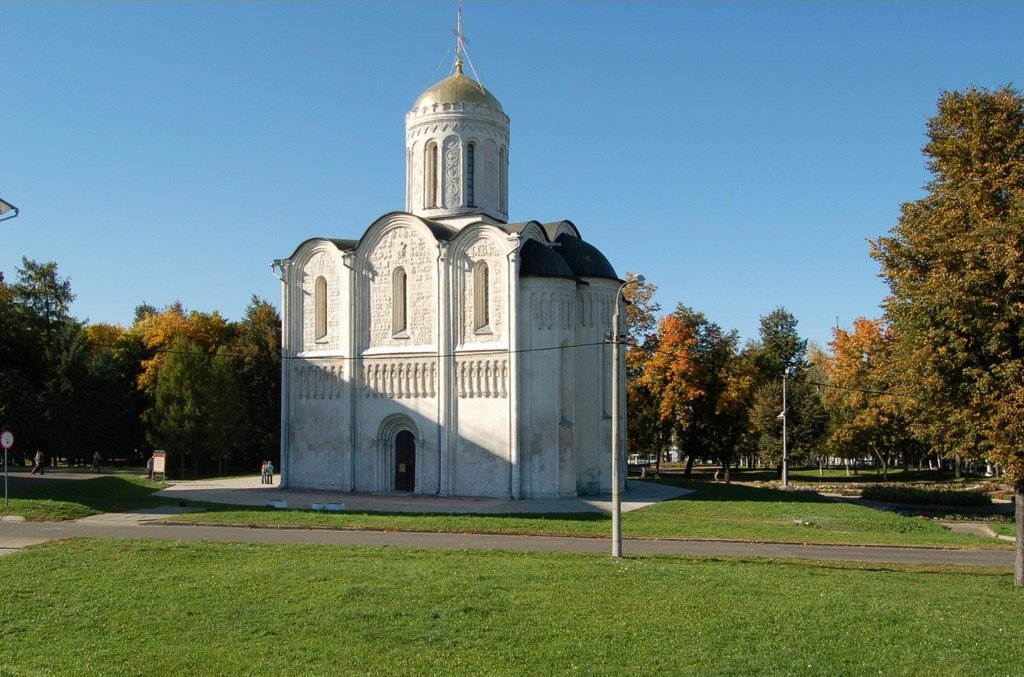
In the middle, the temple is cordoned off by an ornate belt-colonnade. The upper tier is decorated with white stone carvings representing about 600 reliefs. Most of the reliefs have been preserved in their original form, but some of them were replaced in the XIX century during restoration.
.
In the 15th century, Dmitrievsky Cathedral became a parishless church. However, after repairs in 1838-1847, it acquires the status of a parish church. In 1883 the Dmitrievsky Cathedral was pneumatically heated, and a small belfry was erected on the south side, unfortunately not surviving to the present day.
.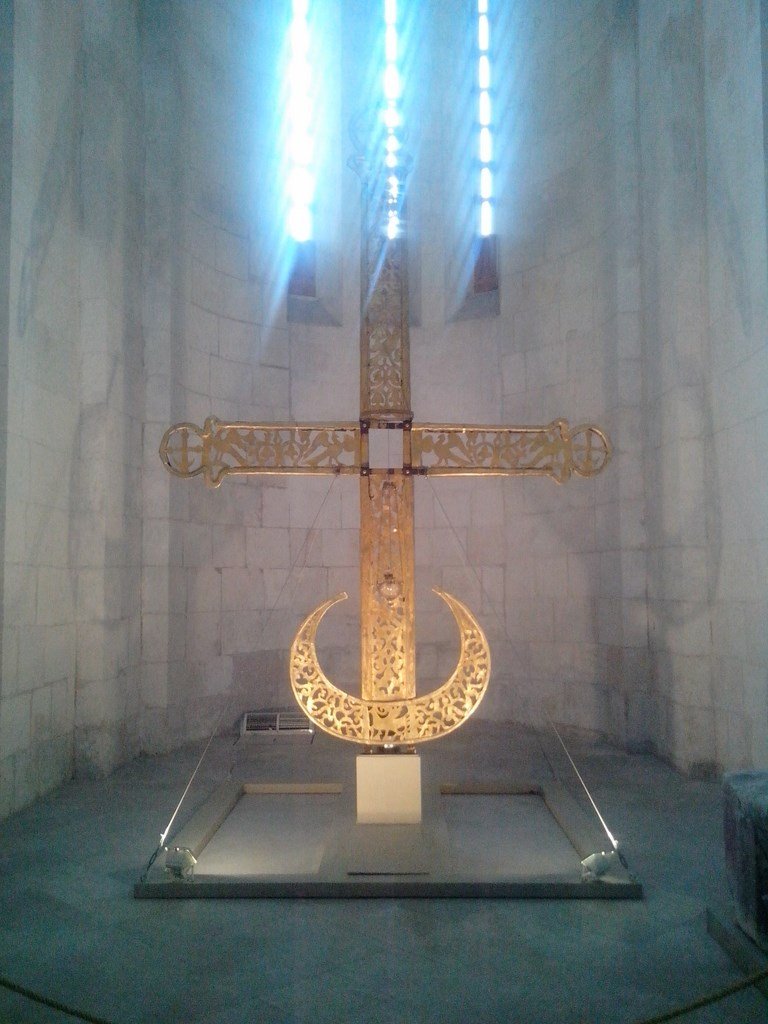
In 1834, visiting Vladimir, Emperor Nicholas I drew attention to the extreme dilapidation and poverty of Dmitrievsky Cathedral and ordered to bring the temple to its original state and remove the galleries. In 1843 during the new painting of the church walls the ancient frescoes under the choirs belonging to the composition “The Last Judgment” were discovered. In the central vault under the choirs the figures of 12 apostles-judges sitting on thrones with angels behind them were preserved. In the small vault under the choirs are painted scenes of paradise life: trumpeting angels, the apostle Peter leading the holy wives to paradise, the prudent robber, “Abraham’s bosom” with the forefathers Abraham, Isaac and Jacob, Our Lady on the throne.
.In the original plan of the sculpture of the facade of the cathedral the leading theme is the theme of power, which is revealed by the compositions with the relief of St. David in the three central zakomars. The image of the psalmist, shepherd, king and prophet David is a prototype of Christ. Such compositions as “The Flight of Alexander the Great” on the southern facade, “The Feats of David” and “The Feats of Hercules” on the western facade, the portrait of Prince Vsevolod with his sons on the northern facade, refer to the theme of the ideal ruler, and heraldic figures of lions, leopards and eagles serve as symbols of power and patronage.
.Interesting facts
- The reliefs of white stone cathedrals, understandable to their contemporaries, already after 200-300 years turned into a secret writing with a barely perceptible plan, which guesses the idea of the heavenly kingdom and the Garden of Eden.
- The cathedral was built by local craftsmen from white limestone stone. It was surrounded by single-tiered galleries that turned into stair towers at the western corners. In 1536, 1719 and 1760. Dmitrievsky Cathedral was subjected to destructive fires.
